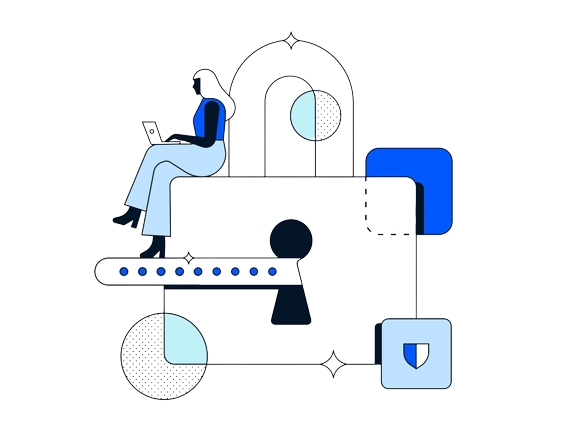The web development field has been fairly developed. Websites no longer need to be hand-coded from the scratch.
Numerous platforms and frameworks, like WordPress, Drupal, and Shopify, are becoming illegitimate standards, helping businesses to get a website up and running in the short amount of time it used to take.
Even so, even though we have good tools to use, they will still need to solve all of our web development problems.
These platforms have significant drawbacks, such as slowness, inflexibility, and security flaws.
Even better tools are needed.
Let’s look at each of these problems and how composable structures can help to solve them.
Moving to a composable structure for 9thCO’s website was one of the most effective development projects we’ve ever seen, and the result was a highly secure website with perfect page speed scores.
Speed
Don’t get me wrong: modern platforms are much faster than old methods of manually building websites.
Since managing hundreds of thousands of static HTML files would be impossible for large companies, content management systems have been widely used.
They are, however, faulty. Serious problems. There are two main problems with speed:
Rendering Speed
Most websites today have a monolithic structure, meaning everything is controlled on a single server.
The single server is responsible for receiving client requests for pages, accessing data, handling functionality, rendering templates, and serving final pages.
As an example, think about the following strategy for a basic e-commerce site:
A product page is requested by the user.
The server receives product information from a database, including product details, photos from a file server, and stock from the same or a separate database. By this, an algorithm finds relevant goods from the database.
It detects the logged-in state and location of the user.
It gets the product page template and populates it.
The page is shown to the user.
All of these steps must be completed to generate a single product page view.
Therefore you can see why a website can take many seconds to render a page.
Take popular shops with thousands of page visits each hour or minute, and you can see why this is a problem.
The Solution
The concept of a monolithic server is made useless by a composable structure.
Fundamentally, the concept is to separate each component of a website (content, data, template, user login, etc.) and then use a program to handle each component separately.
For example, a headless CMS can be used to edit site content only, a payment processing platform can be integrated to handle e-commerce transactions, Next.js or Gatsby can be used to build the site’s presentation layer, and the entire thing can be pre-compiled and hosted on a global content delivery network.
The result? Webpages load almost instantly, and all processing is outsourced to third-party APIs hosted on the cloud.
This means that a website can scale forever while remaining speedy even as traffic increases.
Most composable websites we test in Google’s PageSpeed tool have a performance score of 98 to 100 (out of 100), which has a direct impact on SEO.
Composing Speed
While using a CMS is still far faster than using HTML itself, making new pages can be a moment.
Working with editors and plug-ins, as well as directly adjusting, all take time and can be frustrating.
Styles are often changed by content editors based on personal choice, resulting in errors and breaking.
The Solution
The flexible approach also extends to website content.
Breaking down pages into reusability allows you to quickly create and populate new pages, much like building with Legos.
We’ve seen content population times on websites reduced from two to three weeks to three to four days by using this approach.
Flexibility
Working with templates helps maintain consistency across a website.
Templates, on the other hand, are often “trapped.” If you want to test a landing page by moving or introducing a new component, it might be difficult, if not difficult, to do it without the help of a developer.
The Solution
Because everything on a website exists as a component in a composable structure, each page is fully flexible and changeable.
Depending on the CMS used, components inside a page can be moved, edited, copied, and removed with simplicity.
Using this approach, we’ve seen landing page restructuring go from hours to minutes.
Security
Everything on a monolithic website, as described above, is stored on a single server.
This program component, data, and maybe even financial information from customers.
Attackers are becoming more skilled at hacking into these systems through increasingly complex attacks.
Not only does delay due to hacking result in revenue losses, but it can also harm your brand by reducing customer trust.
According to Bloomberg, “ransomware attacks against industrial companies will increase by 87% in 2022.”
The Solution
There is no one hackable entry point for a website with a composable structure.
The website has been which was before and is stored on a backup CDN.
The information is stored in entrepreneurship cloud solutions (accessed only via API), and all financial processing is handled through third-party APIs.
Simply said, there isn’t much for hackers to hack on your end.
Final Words
A few technological trends have come and gone due to a need for more mass adoption. But, you can relax knowing that modular structure is here to stay.
According to Gartner, composable application architecture is a sector that is the key trend, and companies that create systems using a composable strategy will “surpass competitors in the speed of new feature development by 80%.”
Naturally, change might be difficult.
Many marketers receive training on WordPress, Drupal, or other popular platforms.
Yet there is a new, better, faster, and more secure way, and the advantages greatly surpass the pain of implementation.
Choose composable structure as your preferred strategy if you’re planning to build or redesign a website.
Not sure where to start?
Netlify and Vercel, the two fully independent deployment CDNs, offer free levels of access as well as libraries of starter project templates.
You can rapidly roll up your sleeves and become comfortable with the basic construction blocks of the composable structure.
More content at PlainEnglish.io.
Sign up for our free weekly newsletter. Follow us on Twitter, LinkedIn, YouTube, and [**_Discord*](https://discord.gg/GtDtUAvyhW) *._**
Interested in scaling your software startup ? Check out [**_Circuit**](https://circuit.ooo?utm=publication-post-cta)._






Top comments (0)